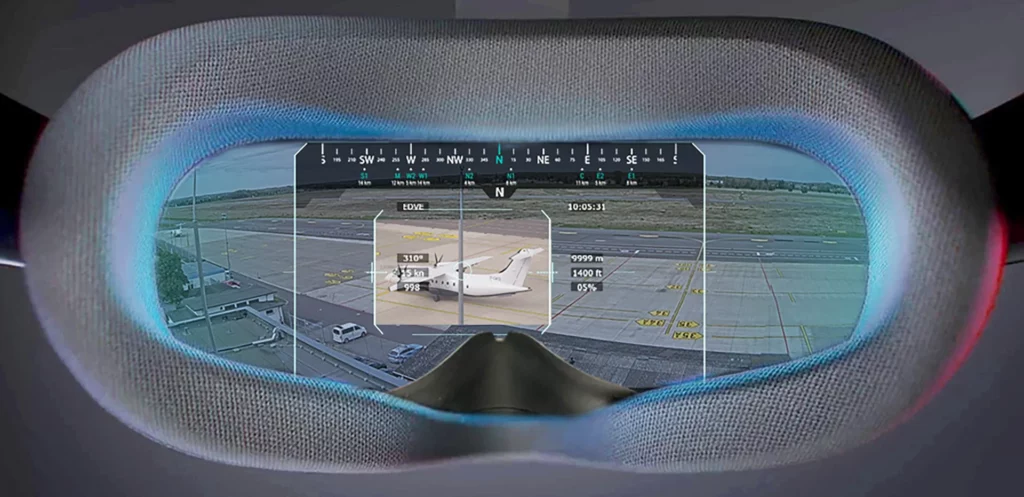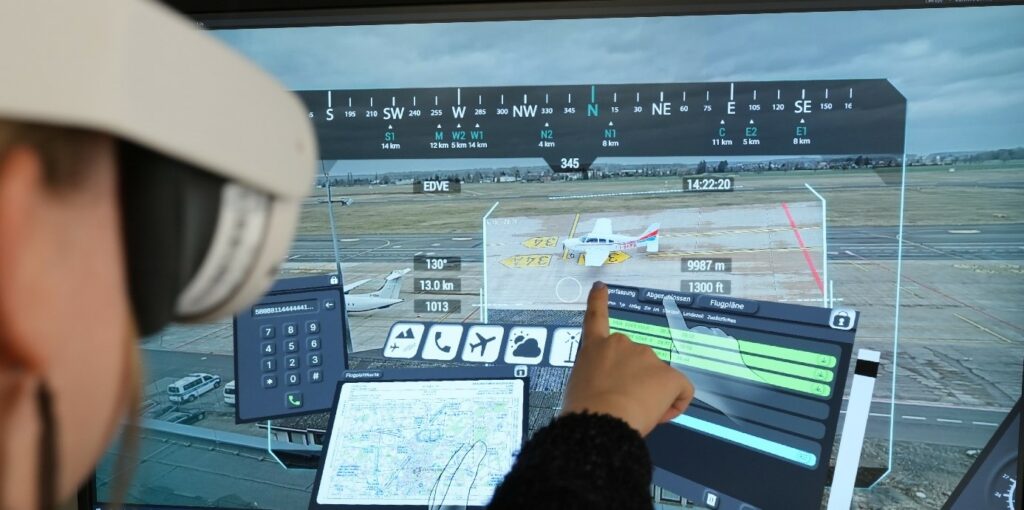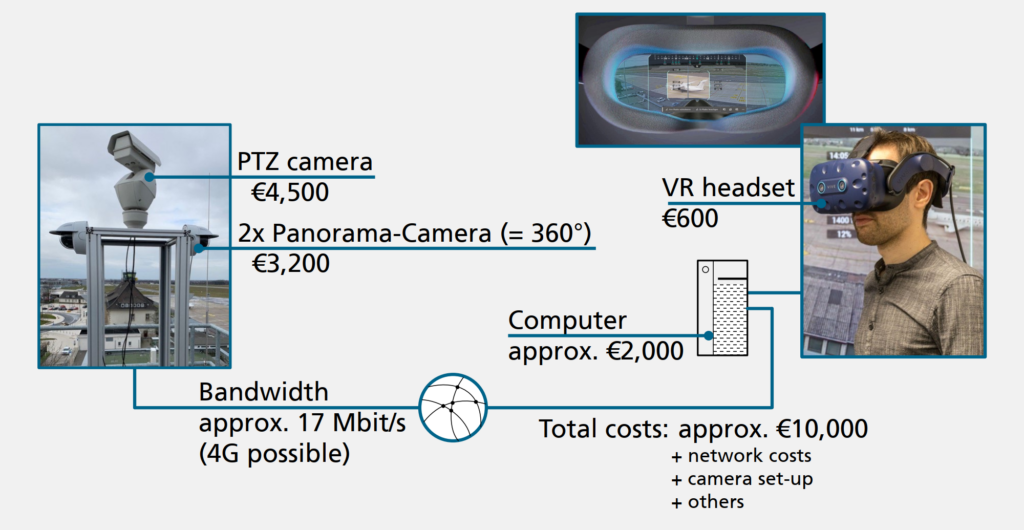May Virtual Towers Become Reality?!
Motivation
May Virtual Towers Become Reality?!
Motivation

Remote Towers are already in operation and more and more Remote Tower Centers (RTCs) are becoming available worldwide. Air traffic controllers are no longer tied to the location of the airport for which they provide ATC services. Moreover, airports can now be grouped together in RTCs, creating even more synergies to increase flexibility, safety and the service level for airspace users.
Transforming Conventional Towers to Virtual Towers
But now, think one step further! What if the entire Controller Work Position (CWP), including the view out of the window and all other required workstation systems and needed interactions, was deployed in a virtual environment? Not in fixed virtual caves, but wirelessly, anywhere, using standard and affordable virtual reality glasses. You are not even tied to an RTC anymore. Wherever you have internet access, no matter where, in an RTC, at home, across borders, around the world, the ATCO or AFISO can provide air traffic services wherever and whenever needed.
- For example, during the day in Geneva the ATCO can take over the night traffic from Melbourne to avoid unpleasant night shifts in Melbourne and vice versa 12 hours later in order to avoid unpleasant night shifts for Geneva.
- Another example is that the controller can control the only night flight from home and does not have to drive to the ATC tower in the middle of the night.
- In an emergency, you can ask an ATCO for help, who will connect virtually.
- Or you provide an AFIS service at your airport, but the pilot asks for a higher ATC service: just call a free ATCO colleague out of the cloud, who can take over the flight in question.
- Or share the shifts with other AFISO at low-density airports to extend the opening hours during off-peak periods.
All of this will improve the level of service at your airport, increase revenue and make your small airport more sustainable and financially self-sufficient.

Another advantage is that you no longer have to worry about maintaining a tower building or even CWP hardware, because there is no longer any CWP hardware except for the glasses. This makes the user interface easy to harmonise across all units. Interface adaptations or software updates can be installed on all the glasses at the same time and the controllers always have the same user interface, regardless of which airport they are at.
Even better, the hardware and infrastructure requirements are extremely low: The Virtual Tower concept consists of a basic video panorama using low-cost camera sensors, a standard state-of-the-art pan-tilt-zoom (PTZ) camera, a processing computer and a virtual reality environment (VR headset). The VR headset is used to display the video panorama and PTZ streams, to control the PTZ camera via a head tracking function and to provide radio communication, airport ambient sound and all necessary human-machine interactions, such as: electronic flight processing system, weather, communication or light panel systems. And all of this with very low hardware costs (less than 15,000 euros) and very low bandwidth requirements, which can even be transmitted using mobile phone networks.
How far have we come? Will ATC move in this direction? Check out DLR’s prototype and let us know what you think!

Most Recent Publications
- Reuschling, Fabian und Jakobi, Jörn (2022) Designing a low-cost Remote Tower Solution. In: Virtual and Remote Tower (2nd edition) – Research, Design, Development, Validation and Implementation Research Topics in Aerospace. Springer Publishers. Seiten 543-566. doi:10.1007/978-3-030-93650-1_22. ISBN 978-3-030-93649-5. ISSN 2194-8240
- Opower, Helena und Jakobi, Jörn (2022) Design Study for a Virtual Work Station for Aerodrome Air Traffic Service Officers. In: 34th European Association for Aviation Psychology, EAAP 2022. The 34th EAAP Conference, 26.09.2022 – 30.09.2022, Gibraltar. doi: 10.1016/j.trpro.2022.12.012. ISSN 2352-1457
The Invention of Remote Tower at DLR
The idea of a Remote Tower was firstly formulated by DLR in 2002 in a brainstorming for blue sky technologies. The idea received an innovation award and in 2005, the world’s first remote-tower prototype was employed by DLR at Braunschweig-Wolfsburg Airport to test the concept’s technical and operational feasibility. Several national and international research and development activities followed and numerous ANSPs, such as the Swedish ANSP LFV and the German ANSP DFS, expressed their interest and collaborated with DLR. In 2014, DLR licensed the technology to the industry and in 2015, the first remote-tower installation went operational in Sweden, providing control of Örnsköldsvik airport from Sundsvall. In December 2018, the DFS went operational with Saarbrücken Airport, its first remotely controlled airport out of the Remote Tower Center in Leipzig.
DLR has played a major role in the development of Remote Tower since the original idea and the first prototype. Numerous research activities helped the aviation industry to realise the concept in an exceptionally short time period.
DLR drives the standardisation within EUROCAE working group 100 and was the project coordinator of the largest Remote Tower projects in SESAR 2020.



